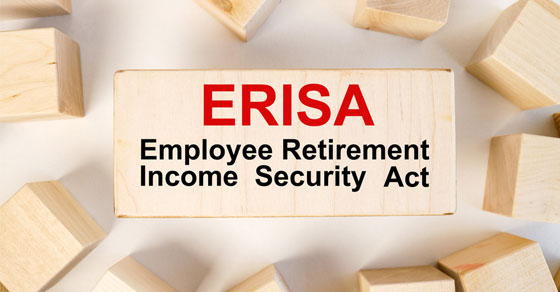Most employer-sponsored retirement and welfare benefit plans are subject to the federal Employee Retirement Income Security Act (ERISA). These include health insurance coverage and qualified retirement plans.
ERISA requires applicable plans to have a plan document and a summary plan description (SPD). Everyone involved in benefits administration must understand and respect the importance of both.
The plan document
ERISA-compliant plans must be “established and maintained pursuant to a written instrument” called the plan document. It comprehensively sets forth the rights of the plan’s participants and beneficiaries by describing:
- What benefits are available,
- How those benefits are funded,
- Who’s eligible to participate,
- Who’s the named fiduciary,
- How the plan can be amended, and
- The procedures for allocating plan responsibilities.
The plan document also guides the plan sponsor and administrator in making decisions and executing their responsibilities.
The SPD
As mentioned, ERISA-compliant plans must also have an SPD. A key function of this document is clearly communicating plan information to participants. The SPD must include many specified items, such as:
- Plan-identifying and eligibility information,
- A description of plan benefits and circumstances causing loss or denial of benefits,
- Benefit claim procedures, and
- A statement of participants’ ERISA rights.
The SPD must be written so the average plan participant can understand it.
Obligation to furnish
Sponsors of ERISA-compliant plans must furnish SPDs to participants at specific times. These include when new participants join a plan (within 90 days) and upon a participant’s written request (within 30 days).
Failure to furnish the documents within the stated period may expose the plan administrator — typically the employer — to penalties of up to $110 per day. It’s particularly important to respond to participant requests in a timely manner because you can still be hit by a penalty if you’ve already provided the SPD but ignore the request.
Choose your delivery method carefully. U.S. Department of Labor (DOL) regulations require you to furnish SPDs in a way that’s “reasonably calculated to ensure actual receipt” and “likely to result in full distribution” to everyone required to receive them. Because of the nature of these rules, whether a delivery method is satisfactory depends on the facts and circumstances regarding the employer’s workplace and workforce.
The regulations include several examples of acceptable SPD distribution methods. While hand-delivery of SPDs to employees at the worksite is a specifically approved method, the regulations caution that it’s unacceptable “merely to place copies of the [SPD] in a location frequented by participants.” In other words, the DOL envisions a system designed to put SPDs into the hands of required recipients — not a system that relies on those hands reaching out for the SPDs.
The DOL may view an approach that requires employees to take action to receive their SPDs as unlikely to result in “full distribution.” Participants may be unaware of the importance of receiving an SPD or might not pick it up within the applicable timeframes.
Bottom line
Be aware of other forms of required plan documentation, too. For example, you must distribute a summary of benefits and coverage upon initial enrollment and annually during open enrollment. If you make significant changes to a plan, you need to provide participants with a summary of material modifications within 210 days after the end of the plan year during which the changes were made.
The bottom line is that failure to comply with ERISA may lead to costly penalties that undermine your organization’s financial performance. We can help you and your staff better understand the rules, as well as manage the costs and tax impact of retirement and welfare benefit plans or any other fringe benefit.
© 2025
